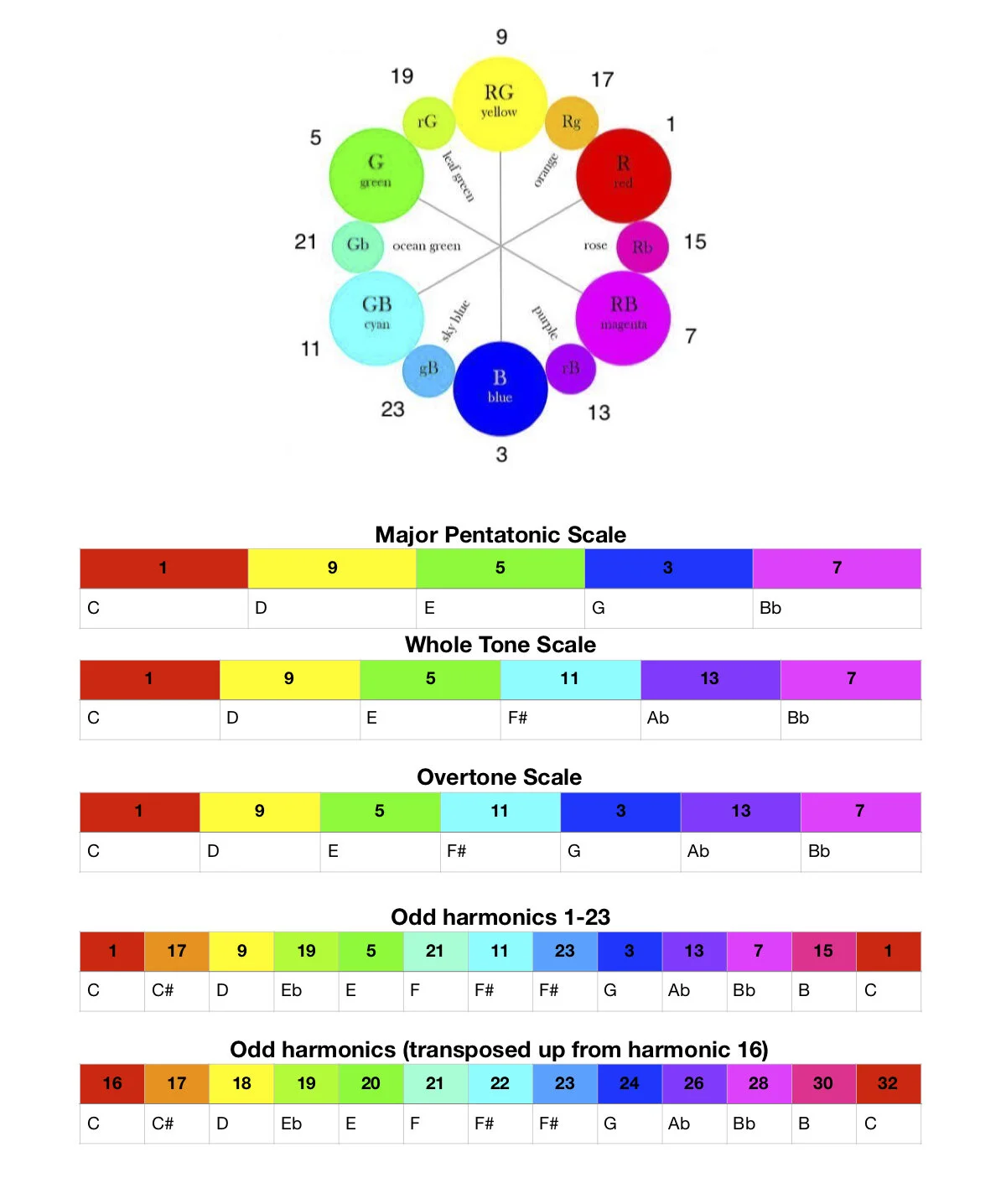My Love of Microtonal Tuning
My other main interest is microtonal music composition, which generally involves using notes from the harmonic series to create just intonation or spectral tunings. What I love about using microtones is the infinite palette of notes that are available between the cracks of the 12 notes on the piano. Like the limitless hues of the colour spectrum, pitch is a continuum of infinite notes and intervals.
I love microtonal tuning as you can work with whole number ratios found in the harmonic series. These notes can be heard in overtone singing and as harmonics when when divide a string at its fractional points. Conceptually I see the harmonic series as being connected with nature and the piano tuning as being a person-made tuning without the same mathematical purity. The the volume each individual overtone of a particular instrument gives us its timbre. A flute has louder even overtones and a clarinet has louder odd overtones. A microtonally tuned instrument such as a piano can set off new overtone interactions between played notes that you wouldn’t normal hear, changing the familiar piano timbre.
I also love microtonal intervals that are close in pitch as they can make enharmonic scalic steps and interference beats when played together. Basically, what is not to love about microtonal tuning!
Using Coloured Water to Map Unfamiliar Scales
I started to work with colour and microtonal scales as a postgraduate student when I built a custom made 60-glass Microtonal Glass Harmonica, tuned to two octaves of Harry Partch’s 29-note to the octave just intonation scale. I colour coded six sub-scales with food colouring in the water of each glass. The colours helped the percussionists navigate the unfamiliar scales and made the instrument looked really pretty!


























